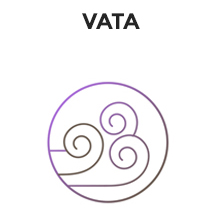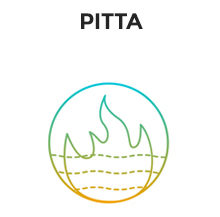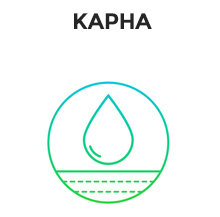[vc_row][vc_column][vc_single_image image=”4793″ img_size=”full” alignment=”center”][/vc_column][/vc_row][vc_row css=”.vc_custom_1694113166080{background-color: #c5dfe6 !important;}”][vc_column][vc_column_text]Understand some basic principles we use in Ayurveda that have no equivalent in English, so we use the traditional words. Becoming familiar with these special terms also opens us to understanding our bodies and health in another way.
The tremendous healing powers of the human body have for long been documented by the ancient practice of Ayurveda, which itself enables the body to unleash these powers and heal itself.
Ayurveda the ancient Indian art of healing is based on the philosophy that every substance in nature is composed of five basic elements – the “Pancha- maha- bhoota”. These are Earth-Prithvi, Water-Jal , Fire-Agni , Air-Vayu and Ether- Akash. The human body is a microcosm of nature and thus all these five elements are present in a material as well as a subtle sense within each individual. A balance of these five elements is responsible for the very life force of each human being or any living being for that matter.
Look at it this way – Water which is so essential to life, keeps our body hydrated and is the main component of the cytoplasm which is present in every cell of our body. Earth signifies all the solidity of the body, the fire element regulates the metabolism within our body, Akash or space signifies the spaces within our organs in the body and Air constitutes the very breath of life.[/vc_column_text][/vc_column][/vc_row][vc_row][vc_column][vc_column_text]
The Three Doshas
Ayurveda believes that there are five elements which are at the essence of the entire universe, both animated, as in you and I, and non-animated, such as the planet we live on. These elements are; space, air; fire, water and earth, and within our bodies they combine to create what we call the three doshas, qualities or energies that influence all our bodily functions; Vata, Pitta and Kapha. Understanding the essence of the three doshas, and the other terms you see below is necessary for making sense of all that is written in this book.
[/vc_column_text][/vc_column][/vc_row][vc_row][vc_column width=”1/3″][vc_column_text css_animation=”none” css=”.vc_custom_1708672109761{background-color: #e3ce9f !important;}”]
1
VATA
[/vc_column_text][/vc_column][vc_column width=”1/3″][vc_column_text css=”.vc_custom_1694113358318{background-color: #e3ce9f !important;}”]
2
PITTA
[/vc_column_text][/vc_column][vc_column width=”1/3″][vc_column_text css=”.vc_custom_1694113366502{background-color: #e3ce9f !important;}”]
3
KAPHA
[/vc_column_text][/vc_column][/vc_row][vc_row gap=”35″ equal_height=”yes”][vc_column width=”1/2″ el_class=”shadow_1″][vc_column_text] Vata is composed of space and air, and is the subtle energy in the body which is associated with movement and change. It governs, for example, breathing, the beating of the heart, all muscle movements and the fine actions that take place at the cellular level. When this dosha is in balance it leads to creativity and flexibility; when out of balance it leads to anxiety, fear, dysfunction, pain and stiffness.[/vc_column_text][/vc_column][vc_column width=”1/2″ el_class=”shadow_1″][vc_column_text]
Vata is composed of space and air, and is the subtle energy in the body which is associated with movement and change. It governs, for example, breathing, the beating of the heart, all muscle movements and the fine actions that take place at the cellular level. When this dosha is in balance it leads to creativity and flexibility; when out of balance it leads to anxiety, fear, dysfunction, pain and stiffness.[/vc_column_text][/vc_column][vc_column width=”1/2″ el_class=”shadow_1″][vc_column_text] Pitta is composed of fire and water, and is at the essence of the metabolic system, the workings of our bodies such as digestion, absorption, assimilation and the governing of body temperature. In balance, Pitta promotes understanding and intelligence, and out of balance it creates excessive anger, frustration and irritation, skin problems, acidity, and inflammatory disorders in the body.[/vc_column_text][/vc_column][/vc_row][vc_row][vc_column][vc_empty_space][/vc_column][/vc_row][vc_row gap=”35″ equal_height=”yes”][vc_column el_class=”shadow_1″][vc_column_text]
Pitta is composed of fire and water, and is at the essence of the metabolic system, the workings of our bodies such as digestion, absorption, assimilation and the governing of body temperature. In balance, Pitta promotes understanding and intelligence, and out of balance it creates excessive anger, frustration and irritation, skin problems, acidity, and inflammatory disorders in the body.[/vc_column_text][/vc_column][/vc_row][vc_row][vc_column][vc_empty_space][/vc_column][/vc_row][vc_row gap=”35″ equal_height=”yes”][vc_column el_class=”shadow_1″][vc_column_text]
Kapha is mainly composed of earth and water, and as such is the energy which forms the structure of the body. Kapha is the source of lubrication for the body, and keeps the joints flexible and the skin moisturised, as well as maintaining our immune system. In balance, this dosha promotes love, forgiveness and stillness; out of balance it leads to greed, attachment and possessiveness. Too much Kapha causes excess mucous and, for example, heart diseases which are associated with congestion in the arteries.[/vc_column_text][/vc_column][/vc_row][vc_row][vc_column][vc_empty_space][/vc_column][/vc_row][vc_row gap=”35″ equal_height=”yes”][vc_column width=”1/2″ el_class=”shadow_1″][vc_column_text]![]() Agni is the metabolic fire, the body energy that at a physical level is entirely responsible for transforming things from one form to another, in all the steps from food to tissue. Every transformation is supported by Agni, which is therefore vital for health, because every function of our body is founded on change—from food to cells, from air to energy and so on—and if Agni is diminished, then so are all our functions.[/vc_column_text][/vc_column][vc_column width=”1/2″ el_class=”shadow_1″][vc_column_text]
Agni is the metabolic fire, the body energy that at a physical level is entirely responsible for transforming things from one form to another, in all the steps from food to tissue. Every transformation is supported by Agni, which is therefore vital for health, because every function of our body is founded on change—from food to cells, from air to energy and so on—and if Agni is diminished, then so are all our functions.[/vc_column_text][/vc_column][vc_column width=”1/2″ el_class=”shadow_1″][vc_column_text]![]() Srotas are physical channels within the body, from large such as the digestive tract, to the microscopic, at the cellular level. Srotas carry blood, sweat, pancreatic fluid, semen, faeces, and are the means by which nutrients reach our cells, and the means by which we excrete waste. To keep these channels open and flexible is naturally an essence of good health.[/vc_column_text][/vc_column][/vc_row][vc_row][vc_column][vc_empty_space][/vc_column][/vc_row][vc_row gap=”35″ equal_height=”yes”][vc_column el_class=”shadow_1″][vc_column_text]
Srotas are physical channels within the body, from large such as the digestive tract, to the microscopic, at the cellular level. Srotas carry blood, sweat, pancreatic fluid, semen, faeces, and are the means by which nutrients reach our cells, and the means by which we excrete waste. To keep these channels open and flexible is naturally an essence of good health.[/vc_column_text][/vc_column][/vc_row][vc_row][vc_column][vc_empty_space][/vc_column][/vc_row][vc_row gap=”35″ equal_height=”yes”][vc_column el_class=”shadow_1″][vc_column_text]

AMA
Ama is the name Ayurveda gives to the toxins in the body which are associated with undigested food, ingested pollutants, or experiences that are not assimilated within our minds. Excess Ama leads to our bodily systems being clogged or blocked, because it is not excreted by our natural systems. It leads to fermentation and subsequent imbalance in all three doshas. Ama, toxic material, is fertile ground for the development of disease. It has no useful function within the body, only destructive, so is best avoided and removed.
[/vc_column_text][/vc_column][/vc_row][vc_row][vc_column][vc_empty_space][/vc_column][/vc_row][vc_row][vc_column][vc_column_text]
DHATUS AND OJAS
[/vc_column_text][/vc_column][/vc_row][vc_row][vc_column width=”1/2″][vc_column_text]Agni digests whatever we eat and coverts it into nutritional plasma and faeces. The lymph and the blood stream absorb the nutritional plasma and transform them into various tissues with the aid of Dhatu Agni (metabolic fire). Normally the transformation process occurs in the following sequence:
- Food eaten nourishes the Rasa (plasma) and, with the aid of Agni, it is transformed into Rakta (blood). The process continues with Agni acting on the tissue at the stage of conversion.
- Ojas is generated at the end of the conversion process, which is the residual pure energy vital for maintaining the immune power of the body.
- Healthy Dhatus and Ojas promote positive emotions, immunity, vitality, strength, health, enthusiasm and tranquility of mind.
[/vc_column_text][/vc_column][vc_column width=”1/2″][vc_single_image image=”4797″ img_size=”full”][/vc_column][/vc_row][vc_row][vc_column][vc_column_text]
Know Your Constitution
* All questions are compulsory
[/vc_column_text][/vc_column][/vc_row][vc_row][vc_column][vc_raw_html]JTVCZ3Jhdml0eWZvcm0lMjBpZCUzRCUyMjclMjIlMjB0aXRsZSUzRCUyMmZhbHNlJTIyJTVEJTBB[/vc_raw_html][/vc_column][/vc_row]

